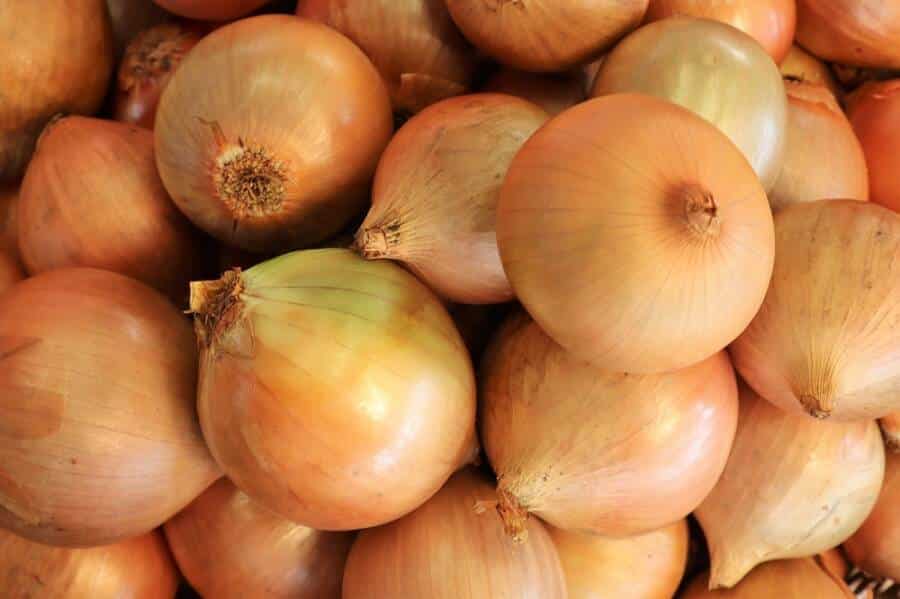Deadly outbreak
By now, you must have heard about the E. coli outbreak linked to McDonald’s Quarter Pounder hamburgers that made one victim and sickened dozens of others in Western states like Colorado. Up to this day, authorities haven’t managed to establish what are the exact causes of the problem.
However, they managed to narrow it down to either the beef in the Quarter Pounders or the slivered onions. An onion supplier is now issuing a recall, which could indicate that the onions are the issue.

Where did the onions come from?
The onions McDonald’s used on the Quarter Pounders in the affected region came from a supplier known as Taylor Farms, as the New York Times stated. The company provides wholesale and retail produce such as whole, chopped, and sliced onions.
What onions are being recalled?
A wide number of yellow onion products from Taylor Farms are now included in the recall, which would have generally been used by food service operations. They also include 30-pound bags of whole yellow onions and 5-pound bags of diced yellow onions, among other things. (There’s more specific information which also includes item numbers that can be found in the Recall Notification from US Foods.)
The recall notice instructs anyone with recalled onions to simply “record the number of cases and proceed to destroy the product.” Moreover, it instructs wholesale buyers who have distributed this particular product to other buyers to destroy all the onions too.
Are we 100% sure the onions were the issue?
No, we can’t tell for sure if the onions were the source of the deadly Quarter Pounder E. coli outbreak. Federal officials are still trying to investigate and track down exactly what has made people sick. But the Taylor Farms recall is targeted specifically on a “potential E. coli contamination,” which is it’s most likely than not related.
Did other restaurants serve these recalled onions?
It’s quite possible that other restaurants and food service institutions served contaminated onions as well. Some other restaurants that, for instance, use US Foods as suppliers or distributors also received the recall notice. One chain, Illegal Pete’s, reported that it got the recall notice, but also stated that they don’t use the recalled onion products.
how disease detectives were able to trace deadly E. coli outbreak to McDonald’s quarter pounders
Silas Mayers rolled into a local McDonald’s drive-through during lunchtime on Monday, October 7. He ordered the usual: a quarter pounder, fries, and a Sprite. By Thursday morning, he noticed waves of stomach cramps that were so intense that he could barely stand up to go to the bathroom.
“It was extremely painful. Every time I’d use the bathroom, there would be blood” as Silas, 17, explained. His mom, Lera Davidson, rushed him to the emergency room at St. Mary’s Regional Hospital, Grand Junction, Colorado.
The doctors took a stool sample and sent it to a lab for analysis, giving him IV fluids and painkillers for the cramps. They decided to keep him in the ER throughout the day, but he was eventually sent home.
He wasn’t able to keep anything down. The smallest sip of water or the smallest bite of a cracker would send him running for the toilet, where more blood would pour out of him. His stool tested positive for a strain of E. coli bacteria, known to be specifically dangerous because it produces Shiga toxin.
This toxin penetrates and kills cells, causing serious tissue damage. One of the worst complications of this type of infection can be hemolytic uremic syndrome, which can also lead to kidney failure and could even be deadly, especially for children and seniors.
All 50 states require labs to notify their own state health departments when they detect such infections, which are known as STEC, for Shiga toxin-producing E. coli. A positive test result for any reportable foodborne illness is based on a series of important, routine actions by local and then state public health offices.
Generally, these states play out quietly, outside the public eye. Without this work outbreaks of foodborne illness could never be spotted or traced back to a tainted ingredient, and more people would get sick and die. “We try to look at every single case we get as if it could become an outbreak. We also investigate every case with this mindset of preventing the spread of disease and stopping a source of disease.”
Scientists at the US Centers for Disease Control and Prevention who worked before with the Colorado Department of Public Health and Environment to further look into the latest E. coli outbreak declared that these cases were generally linked and solved so fast, that it makes it a noteworthy win.

Race to find the root cause
By the time they received the report about Silas’ case, Hartshorn and two other staffers at Mesa County Public Health worked full-tilt, trying to understand why so many people in Grand Junction were getting STEC infections.
Mesa County, an early epicenter, had 11 cases linked to this outbreak, but Hartshorn declared they have called more people than that as part of their own investigation. Some of them won’t be added to the official count, not until the bacteria in their stool has undergone the needed genetic sequencing by the state lab to fully confirm that its DNA fingerprint effectively matches others in the outbreak strain.
The process takes time. Even under ideal circumstances, it’s still difficult for people to remember important details about what they ate. So health departments work around the clock to fix it quickly, to catch people while their memories are still fresh.
After they receive a report of a foodborne illness, a specialist, generally someone who’s trained to do these kinds of detailed interviews, calls the person who got sick. They ask people to try to recall everything they ate for the previous seven days, including all the mentioned ingredients in those dishes.
People also have to mention their recent travel history and if they were in contact with animals, including what kinds of treats they gave to their pets. The Mesa County team made calls to people with STEC infections the week of October 7, three weeks before the CDC announced the investigation.
Within two days, it became quite clear that most people they were discussing had eaten at McDonald’s. The health department dispatched its environmental health team to the local restaurant, but they didn’t manage to find any red flags.
“What we soon realized was that it wasn’t an issue with how the food was made at the restaurant” Hartshorn declared. Employees were washing their hands, food was being made at the right temperatures, and surfaces were cleaned and disinfected accordingly. However, people were still getting sick after eating there, which made them wonder whether the food they had was contaminated before it even got to the restaurant.
If you found this article insightful, that’s great. We have a bunch of other articles you might find useful to read, such as:
4 Hidden Side Effects of High Blood Pressure Meds
Listen to Your Heart(beat): 9 Signs of Heart Failure Not To Miss
New COVID Booster Vaccine: Who Must Get it This Time?
Long COVID Can Last 2 Years – Here Are The Signs You Have It






